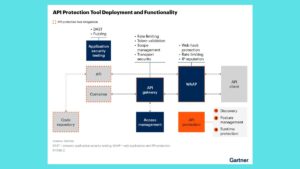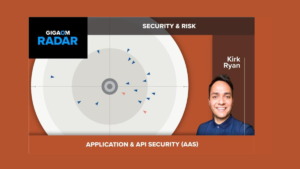Talent Acquisition is a Strategic Process: Elevating Your Hiring Game

In today’s competitive job market, attracting and retaining top talent is more critical than ever. Organizations are increasingly realizing that talent acquisition goes beyond merely filling vacancies; it is a strategic process that requires careful planning, execution, and evaluation. A well-thought-out talent acquisition strategy can significantly impact an organization’s performance, culture, and long-term success.
In this blog, we will explore why talent acquisition is a strategic process, the key components involved, and how organizations can implement effective talent acquisition strategies.
The Importance of a Strategic Talent Acquisition Process
- Aligning Talent with Business Goals: A strategic approach to talent acquisition ensures that hiring aligns with the organization’s overall goals and objectives. By understanding the current and future needs of the business, HR professionals can identify the skills and competencies required to drive success.
- Building a Strong Employer Brand: A well-defined talent acquisition strategy helps cultivate a positive employer brand that attracts high-quality candidates. Organizations with a strong employer brand not only attract talent more effectively but also enjoy increased employee engagement and retention.
- Improving Hiring Quality: A strategic talent acquisition process focuses on identifying the right candidates who possess the skills, experience, and cultural fit necessary for the organization. This leads to improved hiring quality and reduces turnover rates, ultimately saving time and resources.
- Enhancing Candidate Experience: A strategic approach to talent acquisition prioritizes the candidate experience, ensuring that potential hires have a positive interaction with the organization. A seamless and engaging recruitment process can significantly enhance the perception of the employer brand.
Key Components of a Strategic Talent Acquisition Process
To develop a successful talent acquisition strategy, organizations should consider the following components:
1. Workforce Planning
Workforce planning involves analyzing current workforce capabilities and projecting future talent needs based on business goals and market trends. This proactive approach allows organizations to anticipate talent shortages and develop strategies to address them.
2. Defining Job Requirements and Competencies
Clearly defining job roles, responsibilities, and necessary competencies is essential for attracting the right candidates. Organizations should create detailed job descriptions that outline not only technical skills but also soft skills, cultural fit, and growth potential.
3. Leveraging Technology and Data Analytics
Utilizing technology in talent acquisition can streamline the recruitment process and improve decision-making. Applicant tracking systems (ATS), recruitment marketing platforms, and data analytics tools enable HR teams to identify trends, track candidate performance, and enhance sourcing strategies.
4. Implementing a Diverse Sourcing Strategy
A strategic talent acquisition process includes a diverse sourcing strategy that taps into various talent pools. Utilizing social media, job boards, industry events, and employee referrals can help organizations attract a wider range of candidates and foster diversity within the workforce.
5. Engaging Passive Candidates
Many top talents are not actively seeking new opportunities. Engaging passive candidates through networking, relationship-building, and employer branding initiatives can help organizations connect with high-quality candidates who might be a perfect fit for future roles.
6. Creating an Inclusive Hiring Process
Inclusion should be a fundamental aspect of the talent acquisition strategy. Organizations must strive to eliminate bias in their hiring processes, ensuring that candidates from diverse backgrounds have equal opportunities to succeed.
7. Measuring and Evaluating Success
To continuously improve talent acquisition efforts, organizations should establish key performance indicators (KPIs) to measure success. Metrics such as time-to-fill, quality of hire, candidate experience ratings, and turnover rates can provide valuable insights into the effectiveness of the talent acquisition strategy.
Implementing a Strategic Talent Acquisition Process
To successfully implement a strategic talent acquisition process, organizations should follow these steps:
1. Engage Leadership
Gaining buy-in from organizational leadership is essential for the success of the talent acquisition strategy. Engaging leaders in the planning process ensures alignment with business goals and fosters a culture that prioritizes talent acquisition.
2. Collaborate Across Departments
Talent acquisition is a collaborative effort that involves input from various departments, including HR, hiring managers, and team leaders. Establishing a cross-functional team to guide the talent acquisition strategy can lead to more effective hiring outcomes.
3. Invest in Training and Development
Providing training for HR teams and hiring managers on best practices in talent acquisition is crucial. Empowering staff with the skills and knowledge necessary to conduct effective interviews, assess candidates, and promote a positive candidate experience can enhance the overall hiring process.
4. Leverage Employer Branding
Investing in employer branding initiatives can help create a strong, positive image of the organization. Highlighting company culture, values, and employee testimonials through various channels—such as social media, career websites, and job fairs—can attract top talent.
5. Stay Agile and Adaptable
The talent landscape is continuously evolving, influenced by changing market dynamics and workforce expectations. Organizations should remain agile, regularly revisiting and adjusting their talent acquisition strategies to meet emerging challenges and opportunities.
Conclusion
Talent acquisition is not just a function of HR; it is a strategic process that can significantly impact an organization’s success. By aligning talent acquisition efforts with business goals, leveraging technology, fostering diversity, and prioritizing candidate experience, organizations can build a strong workforce that drives innovation, growth, and competitive advantage.
As the job market continues to evolve, organizations must embrace a proactive approach to talent acquisition that not only addresses current hiring needs but also prepares for future challenges. With a well-defined talent acquisition strategy, organizations can attract, engage, and retain the talent necessary for sustained success in an increasingly competitive landscape.






